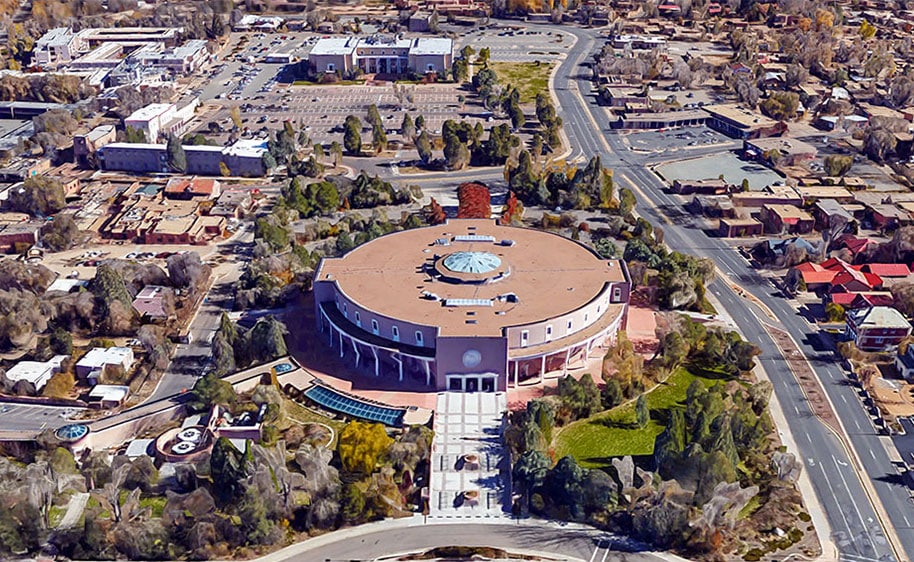 The Roundhouse in Santa Fe. Courtesy photo
The Roundhouse in Santa Fe. Courtesy photo
By ROBERT NOTT
The Santa Fe New Mexican
The House of Representatives voted to approve a $1 billion-plus capital outlay bill Republicans said they could not support because of a $10 million appropriation to construct an abortion facility in Doña Ana County.
The list of projects funded by the legislation includes park upgrades, road improvements, acequia system support, senior center renovations and the construction of fire stations and behavioral health facilities.
But it was the proposed abortion clinic that led House Republicans and two Democrats to vote against the bill Saturday.
The issue of abortion rights has sparked passionate and sometimes heated debates during this year’s session, and the Las Cruces-based facility Gov. Michelle Lujan Grisham announced she would build for women seeking abortions spurred more sparks during the floor discussion.
“I cannot in good conscience support this bill because of the $10 million in this bill for an abortion clinic,” said Rep. Cathrynn Brown, R-Carlsbad. Other Republicans and two Democrats — Rep. Anthony Allison, D-Fruitland, and Rep. Joseph Sanchez, D-Alcalde — went against the bill, which passed 41-26.
Other contentious issues came up in the debate, including the fact McKinley County, which has about 72,000 residents, received nearly $57 million in capital outlay funding, while Lea County, which has a similar population, got about $12.7 million.
“On a per-capita basis, my constituents got $179 a person in capital outlay,” said Rep. Larry Scott, R-Hobbs. “McKinley County constituents got almost $780 per person.
“That seems to be … a question of equity,” Scott said to Rep. Derrick Lente, D-Sandia Pueblo, who introduced HB 505. “Could you explain?”
Lente said Native Americans make up the majority of residents in McKinley County. He said they have been disenfranchised for centuries and are just now working on building needed infrastructure in their communities.
“Those communities have been nickel and dimed,” Lente told Scott, pointing out Native Americans could not vote in New Mexico until the late 1940s and did not benefit from capital outlay money until the 1990s. “You’re absolutely right. There’s an equity issue in this state … it started decades ago.”
Scott said he did not believe it was fair to address past inequities by denying residents in Lea County as much money as those living in McKinley County.
Other concerns, including whether the process of putting the capital outlay spending bill together was as open as it could have been, came up during the roughly two-hour discussion.
Before the final vote was tallied, Lente said he respected the House members who voted against the bill for personal or religious reasons.
“I never questioned the reasoning behind it,” he said.
Rep. Jason Harper, R-Rio Rancho, said this year’s capital outlay bill was different than most in the past because the money was derived from the $3.6 billion revenue surplus the state enjoys, primarily due to oil and gas revenue.
As such, funding for HB 505 is a nonrecurring expense from the general fund, he said.
A 2022 Legislative Finance Committee brief says much of the state’s capital outlay — often known within the Roundhouse as “pork” — usually is funded through three sources: general obligation bonds, severance tax bonds and nonrecurring general fund revenue.
While the list of capital outlay projects tied to HB 505 is already available, it is not yet clear which ones specific lawmakers or the governor funded.
Under a recent state law, New Mexico is required to publish a searchable database showing how each lawmaker spends capital outlay dollars, part of an effort to make the process more transparent. But that data generally does not become available until after the legislative session ends.
HB 505 now goes to the Senate for consideration.

